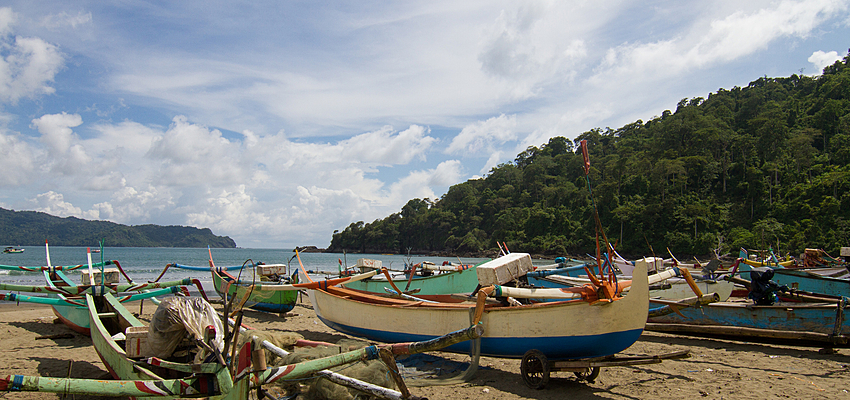


The civilisation that would forever mark Indonesia appeared in the year 1000...
In the year 1000 before Christ, the Dong Son civilization, originating from Vietnam and southern China, spread to Indonesia: the country has maintained its rituals, techniques and cults. The first Buddhist and Hindu temples date to the eighth century, including the very famous Borobudur Temple. Hinduism and Buddhism merged in 1200, with the advent of the Majapahit Kingdom. The reign of Hayam Wuruk in the fourteenth century was the apogee of Javanese civilization. Islam became the state religion in the fifteenth century.
The Portuguese landed in 1512 and took power, setting up various trading posts. Then, in 1596, it was the turn of the Dutch government to found the Dutch East India Company. The Company was liquidated nearly two centuries later and the commercial empire became a colonial empire: the Dutch East Indies were born.
In the nineteenth century,Indonesia was torn by several revolts. Islam became the symbol of the opposition to the Dutch while the Netherlands, having lost Belgium in 1830, stepped up its exploitation of the wealth of the East Indies.
In 1942, the colonial government surrendered to the Japanese. At first, the Indonesians looked upon the Japanese as liberators, only to reject them very soon afterwards. In 1945, Sukarno, founder of the PNI, Partai Nasional Indonesia, proclaimed the independence of his country. Sukarno took power and, in 1965, massacred the Indonesian communists after an attempted coup. Indonesia invaded East Timor in 1975 and twenty years later, as a result of very serious riots, Jusuf Habibie replaced Sukarto as the head of State.

The first democratic presidential elections in Indonesia were held in 1999: Abdurrahman Wahid was elected president. Violent clashes broke out in 2000, when former president Sukarto was recognised as unfit to appear in court even though he had been indicted. Regional crises erupted, notably in West Papua and the Moluccas. President Wahid thus approved military intervention. In total, there were 5000 victims in the Moluccas.
In 2002, clashes and violence between Muslims and Christians in the Moluccas ceased, following a declaration of peace. The independent State of East Timor was proclaimed. The same year, a bombing in Kuta, claimed by the Al Qaeda network, killed 192 persons. In 2004, the devastating tsunami took 230,000 lives. Susilo Bambang Yudhoyono was re-elected president in 2009 and Indonesia did not suffer too much from the global recession. In September, Padang, the capital of West Sumatra (worth a visit during a stay in Indonesia) , was struck by a destructive earthquake that caused at least 5000 victims. In 2010, Papua was struck by an earthquake with an intensity of 6.2 on the Richter Scale.